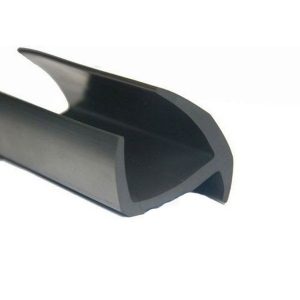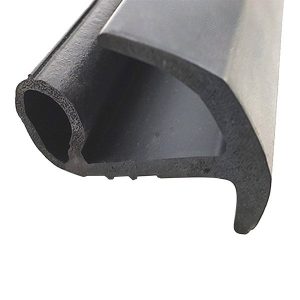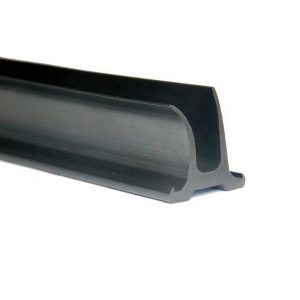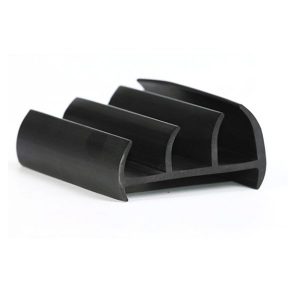Cargo containers are vital in transporting import and export products by ship, train, or truck. Shipping container door seals are essential elements of these cargo containers. However, It is important to note that these ships, trains, or trucks travel through all types of weather and natural obstacles. Heavy winds, rain, or snow can be common natural obstacles. Therefore, shipping container door seals are mandatory to prevent water, air, or snow leakage. So, it is crucial to understand the fundamentals of container door gaskets.
Previously, we learned about different types of seal strips and their shapes. The article’s name was “Seal strip shapes: The most common shapes in all applications.” You learned about a particular seal strip shape, which is a shape seal strip. This type of seal is the most common type used in marine applications. However, other seal strip shapes are also used in those applications, but not as much as the J shape.
This article will introduce you to the fundamentals of shipping container door seals. In addition, you will also learn some basic information related to cargo containers. Later, we will bring some of the most famous shipping container door seals that might be ideal for every cargo container.
Shipping Container Door Seals
This seal strip type is also famous as a container door gasket or shipping container weather stripping. Shipping container door seals are ideal for protecting and sealing out the container. It mainly works against water, snow, dust, or other contaminants. Therefore, shipping container door seals are the typical seal strip types used for weather stripping.
Continuous use of the shipping container door seals erodes the material gradually. As a result, it requires maintenance and replacement if necessary. Shipping container door seals are made of high-quality EPDM rubber. Here, EPDM stands for Ethylene Propylene Diene Monomer. It is a synthetic rubber primarily used for all outdoor applications. However, the specialty of this material is its outer membrane. It is an excellent air-tight and waterproof seal.
The most popular application of shipping container door seals is sealing cargo containers for ships, trains, or trucks. However, you could also use this seal strip in dry cargo containers 20 feet and 40 feet high. Refrigerated containers of 20 feet and 40 feet tall also need this seal strip. Finally, a cube reefer container 40 feet high is also an excellent example of the application of shipping container door seals.
Learn More About Cargo Containers
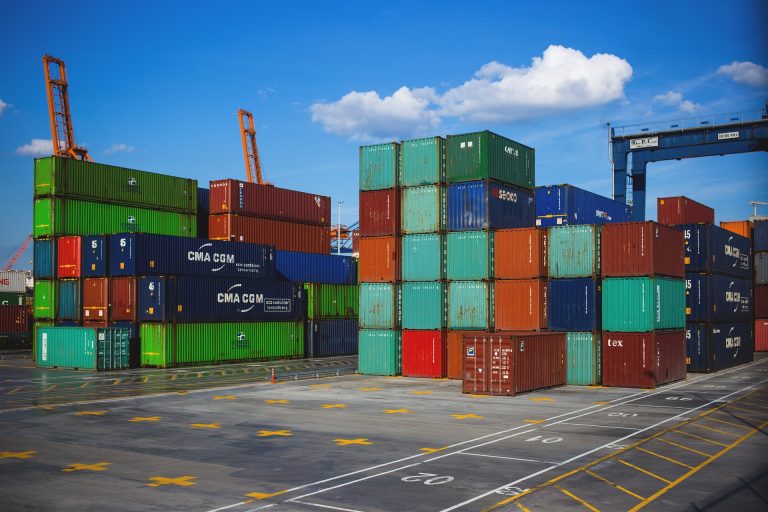
The first sentence of this article mentions that cargo containers transport products. These containers are large steel boxes that have a variety of sizes. The typical material of cargo container structure is corrugated steel, which is very strong and can withstand bulk cargo. The rectangular shape of the cargo container makes it easy to load and unload from the ship, train, or truck. Cargo containers come in different types based on diverse purposes. The following list has the most popular cargo containers used in every port in a country.
- Reefer steel shipping container: This cargo container is ideal for temperature-sensitive products. In this case, you can install a custom-built refrigerator.
- Flat rack containers: These containers are usually ideal for products that can not fit in a typical cargo container. It only has a support post at the end, allowing easy loading.
- Open top containers: As the name implies, this cargo container has an open top, which allows easy loading of oversized products.
- Tank steel shipping containers are typically cylindrical vessels made of stainless steel. However, It is ideal for transporting hazardous and non-hazardous freight such as liquids, gases, or powders.
- Double-door containers: This cargo container usually provides additional doors on the back sides.
- Platform containers: This container has no walls, ends, or roofs. It is ideal for adding odd-sized cargo, which can not easily fit into regular cargo containers.
Seashore Rubber manufactures a wide range of different types of seal strips. Among them, shipping container door seals are noteworthy. Therefore, seal strips from this manufacturer are highly recommended.
Why Are Shipping Container Door Seals Necessary?
The importance of installing shipping container door seals is vast for every cargo container. It is compulsory to install these container seals to prevent many obstacles from outside. A ship, train, or truck travels through different weather conditions and other obstacles on the road. Installing shipping container door seals is necessary to keep the products safe inside. In the following, we have highlighted four primary reasons you should install shipping container door seals.
Weatherstripping and Ozone Resistance
Weather is the primary obstacle for cargo containers. Besides, these weather changes can be frequent or slow. However, shipping container door seals protect the products from a harsh environment. Heavy rain, sea storms, cyclones, heavy wind, or snow can not affect the products inside. Therefore, it is compulsory to install seals.
Prevent Leakage Against Water, Gas, or Air
We already knew tank steel shipping containers carry bulk liquids, gases, or powders. Therefore, filling the gap between joints or openings is a prime concern for this cargo container door. However, shipping container door seals perfectly fill these gaps. In addition, it prevents liquids or gas from coming outside. Moreover, it also prevents outside contaminants from coming inside.
Temperature Control Inside the Cargo Container Door
Temperature control is the prime concern for reefer types of cargo containers. Shipping container door seals perfectly seal all the gaps between the joints and openings. As a result, it makes the container inside air-tight. Finally, a temperature control device can easily control the temperature at a specific range.
Flexibility
Shipping container door seals offer excellent flexibility for the container doors and edges. As a result, it becomes flexible while opening and closing the container door. Due to this flexibility, the cargo containers last longer. However, these cargo containers may still need proper maintenance to ensure durability.
Popular Container Door Seal
There are different types of shipping container door seals with other functionalities. In this case, Seashore Rubber is a leading company that manufactures various seal strip sizes and shapes. All these seal strips are ideal for automobiles, doors, windows, shipping containers, trains, and ships. In the following, we have brought the most popular type of seal strips for a shipping container.
J-type container door seal
This shape of container door seal is the most common in every cargo container. This shipping container door seal’s cross-section resembles the English letter “J.” This rubber seal can withstand high loads of up to 10 MPa. Besides, it can also withstand incredibly high and low temperatures ranging from -40 °F to 248 °F (-40 °C to 120°C).
EPDM weather strip for container edge
This type of EPDM seal strip is explicitly designed for the edges of cargo containers. It is round with a hole at the lower part of the seal strips. The high-quality EPDM material is waterproof and can also withstand mild acids. Due to its excellent compressibility, the EPDM weather strip ensures better long-lasting.
Rubber extrusion strip for container door
This shipping container door seal has a U shape at the upper section and a flat surface at the bottom. Similar to the above seal strips, this type of rubber seal is also made of EPDM rubber. This type of seal strip is ideal for installation at the container doors.
H shape rubber seal strip for container door
This seal shape usually comes as H shape rubber seals, which can withstand high loads and temperatures. Like the other shipping container door seal discussed above, this seal strip is also made of high-quality EPDM rubber. Therefore, it can work against mild acids, too. This type of seal strip is ideal for sealing shipping container doors.
How to Repair Shipping Container Door Seals?
Over time, seal strips erode and lose efficiency. As a result, it requires maintenance for repair or replacement. Replacing the shipping container seals is easy, and you can do it as a DIY project. However, we have divided the replacement steps into two primary stages.
1. Remove the Existing Seal Strips
First, observe the damaged seal and then mark clearly on the seal strips where you need to repair it. Then, using a sharp blade, cut the portion of the damaged seal. In this situation, you may need a saw machine to remove other parts from the marked area. Now, properly clean the adhesives and other contaminants. You must keep the adhesive place free from pollutants since it might not function effectively if the glue combines with them.
2. Apply New Seal Strips
At this stage, first, you pick a new shipping container door seal and place it on the projected area. Now, try to estimate and cut the size using a sharp blade. It is important to note that you can keep a little extra but can not keep it short. Otherwise, the sealing will not work effectively if the length of the rubber seal is short. The next step is to have a drill ready to produce holes, then tap the bolts back into place using a hammer. Finally, add adhesive and finish installing the seal strips.
Final Thought
Shipping container door seals are a vital element of every cargo container. These seal strips act as weather stripping and prevent liquids or gas from coming outside. These seal strips can withstand extremely high and low temperatures. As a result, the products inside a container remain safe from external contaminants and natural obstacles.
Seashore Rubber keeps high quality and the latest machinery to manufacture the best quality seal strips. Contact us for any queries. Our experts are always ready to answer your questions. You can also visit the product catalog to learn more about the products.

